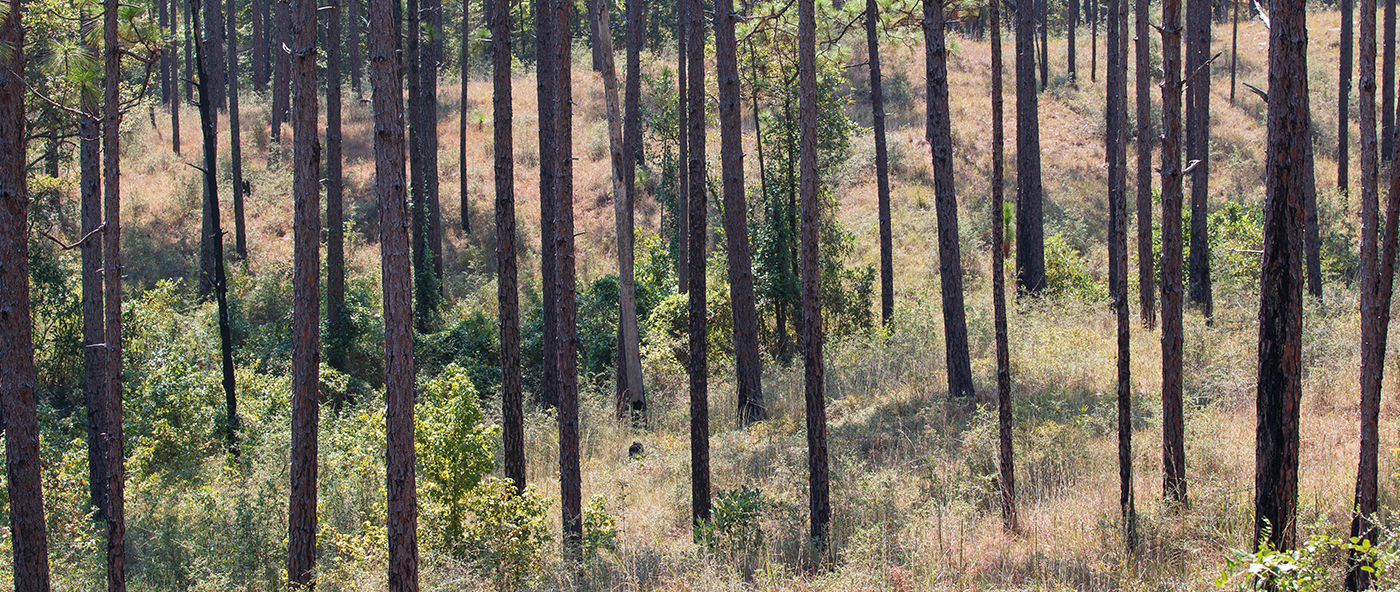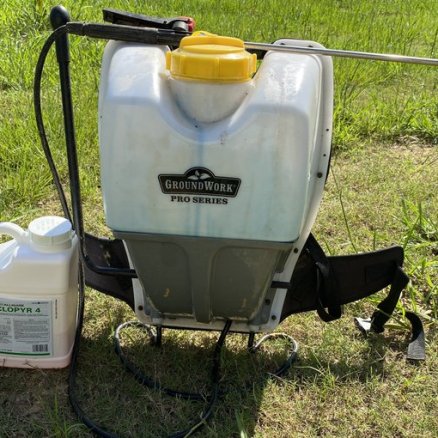



Friend. Since one word doesn’t count as an article, I suppose I should expound a little bit before signing off. Before I begin, let me do some housekeeping by defining a few terms that end in “ide” and have gotten a bad rap. Herbicide is used to control unwanted plants. We commonly use them around sidewalks, fencerows, yards, food plots, and pine plantations. Insecticide is used to control unwanted insects. Every time you spray a wasp nest or use fire ant bait, you’re applying insecticide. The other “ide” that’s commonly used is rodenticide, which is often used when trying to control mice and rats (rodents). All of these fall under the umbrella of pesticides. The word “pesticide” often conjures up images of a skull and crossbones on an old jug, with green stuff oozing out of it, on a shelf in some dark musty basement. It’s actually just a substance used to repel, prevent, or eliminate a pest. Crabgrass, cockroaches, and mice are examples of pests. I want to focus this article on herbicides because that’s what is used most in land management (yards qualify as land). It’s also what landowners ask me about the most.
There are two basic types of herbicides – selective and non-selective. Selective herbicides are, as the name says, selective about what they target. For example, I can spray clethodim in clover plots to control unwanted grass. It will kill the grass but won’t kill the clover. I can apply 2,4-D on my lawn to take out broadleaf plants and it won’t hurt the grass. Non-selective herbicides, generally speaking, are going to kill almost any plant it comes in contact with. The most common is glyphosate. I bet you’ve heard of that one! These are all active ingredients that are usually hidden under trade names. When you look on a store shelf, you likely won’t see ‘”clethodim” in bold letters on the container. An example of what you may see is GrassOut Max. Clethodim is the active ingredient and GrassOut Max is the trade name. WeedClear is an example of what you might find when searching for 2,4-D. The infamous Roundup is the most common trade name that Glyphosate is sold under, though there are several others.
Now that I’ve opened the closet door, I might as well jerk the elephant out. There has been a tremendous amount of turmoil and misinformation surrounding Glyphosate over the past year or two. Not long after it all started, I had to attend a commercial pesticide applicator re-certification conference. As expected, a significant amount of time was spent addressing the glyphosate issue. The opening slide quoted a principle that pretty much summed it up. It said “The amount of energy necessary to refute B.S. is an order of magnitude bigger than to produce it“. Hmm, I could sell T-shirts with that on them today…. Sorry, I digress! My rule of thumb on glyphosate has always been; if you follow the label and you’re not a plant, you’ll be okay. The conference reinforced that theory.
Several points of interest about Glyphosate were made. 1) It works by affecting an enzyme responsible for feeding the plant. It essentially kills it by starvation. That’s why it can take up to two weeks for the plant to brown-up after application. This enzyme is not found in humans or animals. 2) It has a very low mammalian toxicity. The knee-jerk reaction to that statement would be to scream “yea but low toxicity is still toxic”. Before you do that, keep in mind that many things we use almost every day, such as salt, and even water, are toxic at certain levels. Perfumes, cleaning products, and cosmetics all contain potentially hazardous chemicals. If misused, any of these things can and will hurt you. 3) Once applied, glyphosate binds very tightly to the soil, where it breaks down rapidly. This means, once it hits the ground, it stays on-site and doesn’t remain in the environment long. It is also very unlikely that it would find its way down to the water table. 4) The fact that lawsuits are claiming it causes non-Hodgkin lymphoma doesn’t necessarily make it true. Though there will always be certain individuals that have a very low tolerance of certain things, sound research and even the EPA says that glyphosate is safe when used properly.
As landowners and managers, we should always be very mindful of the environment and careful with anything we introduce into it. I believe that if there is a situation where a practical and effective alternative to using a pesticide is available, we should use it instead of the pesticide. We should be very deliberate and careful in our use of them, making sure we follow the label, protect ourselves with proper clothing or gear, and making sure that they are only applied exactly where intended. Following the label isn’t just a suggestion! It’s actually a violation of federal law to use any pesticide in a manner inconsistent with its labeling. When used properly, they are a great and effective tool in our belt.